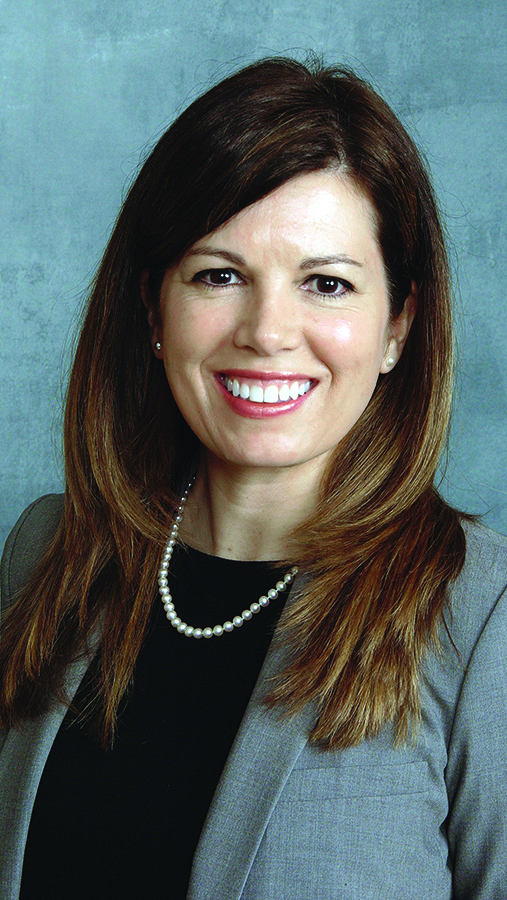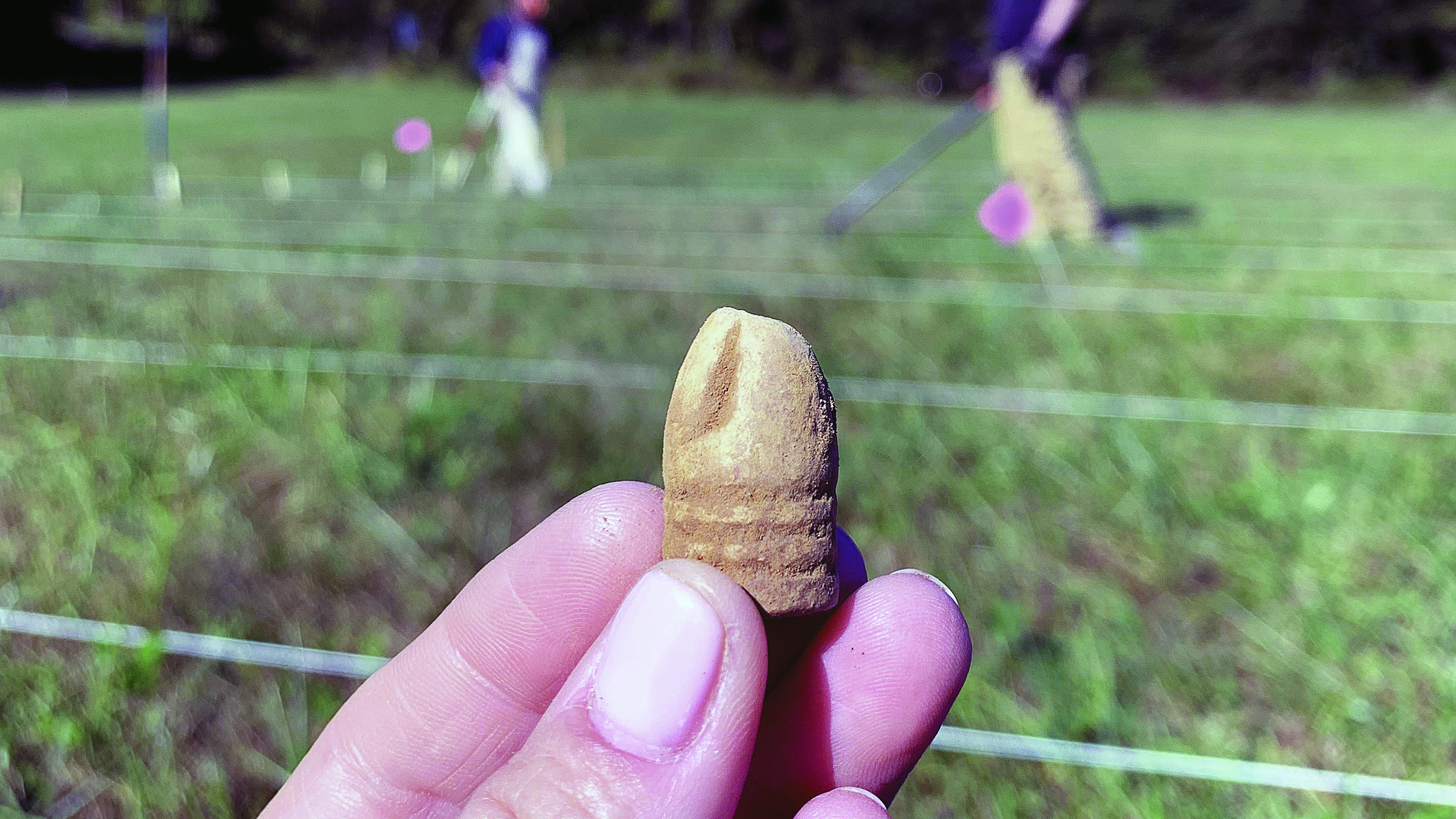Maryland’s archeology honcho keeps tabs on the important artifacts discovered during development
Since the age of seven, Minnesotan Julie Schablitsky wanted to be an archaeologist. Over the years, her interest took her to Oregon for advanced degrees in urban history and archaeology, but the job that best matched her interests proved to be overseeing cultural resources at the Maryland Department of Transportation, where since 2006 she handles issues related to archaeology. She also created a public outreach program showcasing her department’s expertise and findings, including results mapping munitions recovered from Civil War battlefields.
CWT: Why does Maryland Department of Transportation have an archaeologist?

JS: We have 15 archaeologists and architectural historians because there are both federal and state laws that require agencies that receive federal and state funding to consider their impacts to cultural resources, so these various laws then provide agency staff to carry out the work. For example, if the state Department of Transportation wants to go out and widen a highway, we need to determine if there’s going to be an impact on an archaeologically significant site or a historic structure. If there is, we plan and design a way around it. If we can’t avoid it, then we try to minimize the impact on the site, and if we can’t do that, then we have to mitigate, meaning if there’s no way but to go through an archaeological site, that usually means doing an archaeological excavation to dig up the artifacts, record what we’re finding, so it can be in a report and shared with the public.
CWT: How did you get into this line of work?
JS: Archaeologists have a passion for history and an interest in discovery and learning about people that usually lived in the past. When you’re getting a masters and go on to a Ph.D., you can go into teaching, work for the National Park Service, the Forest Service, a state highway administration or county office, and sometimes cities. Or you can work for a consulting firm that gets hired by agencies to carry out the work. I wanted to go into something that served the public. I found out that working for the Oregon Department of Transportation and doing highway archaeology was very interesting because I have a specialty in urban archaeology. Three years later, I applied for the team leader position of cultural resources at the Maryland Department of Transportation State Highway Administration. I have been growing the program ever since.
CWT: Tell me about a project related to the Civil War.
JS: We recently had an archaeology public day in Burkittsville, Md., and people could come and see what we were doing for a project on the September 1862 battlefields on South Mountain. We did a metal detector survey because it’s the best way to find where the men were fighting. They fired munitions, dropped buttons and uniform insignia. We did enough metal detecting at one location that we’re going to be able to tell where the bullets were being fired from because of the number of dropped munitions. So now those hundreds of pieces of lead munitions have been sent out for an analysis. That will tell us if it was melted, dropped, fired, was pulled, was fired out of a dirty gun, etc. We’re finding everything from round shot to Minié balls. Many different varieties: Confederate versus Union, fired from a pistol. All these different sorts of munitions. They will be able to tell us where these men were standing, fighting, and falling.
CWT: Is this a first?
JS: It’s not a first, but it really speaks to why we should be discouraging people from going out on the battlefield and collecting items without each one of those artifacts being mapped into the exact location it was fired or dropped. When we find a Minié ball, we don’t just stick it in our pocket and keep moving. We stop, we put a pin flag in the location, and map it so when we get back to the office, we can develop these maps that will code out the munitions and show you exactly where these shots were dropped. Even though we are taking these artifacts, we are recording in perpetuity where they were and what they were.
CWT: Is the practice of relic collecting using metal detectors a problem?
JS: Relic collectors can love an archaeology site to death. If they end up vacuuming an entire battlefield, then when we come along, we can’t tell you the story through artifacts. We’re just left with bits and pieces of the story, and the only reason we can find things today is because we have been able to put money into detectors that can go very deep into the soil. Often so much has been lifted from a battlefield that very little is left for us to read the story. A lot of relic hunters think it’s just a harmless hobby, but it’s not. Random metal detecting really harms archaeological sites and rips pages from the story of our past.
CWT: What kind of interpretation can archaeology bring to Civil War history?
JS: We find that we can confirm, contradict, or contribute to what has already been written about the event. Another site we worked on is one of the best preserved sites of the War of 1812—the Battles of Caulk’s Field on the Eastern Shore in Kent County. We could tell you exactly where soldiers were based on the trajectories of distance of the canister shot. This is science.
CWT: What other types of items have you found?
JS: We found a brass rooster pin in Burkittsville, an insignia often associated with the 7th Ohio Infantry, nicknamed the “Fighting Cocks.” The only reason we found it was because the vegetation had grown over it. Otherwise it would have been picked up by relic collectors. Often, the little personal items are gone. Sometimes we have found a button or two, or a harmonica reed, these items humanize the men that were out there fighting.
CWT: What is your message to the Civil War aficionados?
JS: In an ideal world, people interested in history would reach out to local universities or a local archaeologist or the Maryland Historical Trust because there are volunteer opportunities. Archaeologists have a lot of tools. Of course, you have the shovel and trowel and screen, but now in the age of technology we have ground-penetrating radar that helps us find buried features. And we have metal detectors. Technology is getting better and better. We have the ability to map in artifacts very quickly with GPS and create GIS maps. The technology is allowing us to resurrect the history very quickly, efficiently, and accurately. We’re not here to dig things up and put them in a box, so that nobody can learn or get excited about them.
Interview conducted by Senior Editor Sarah Richardson
This interview appeared in the June 2020 issue of Civil War Times.





